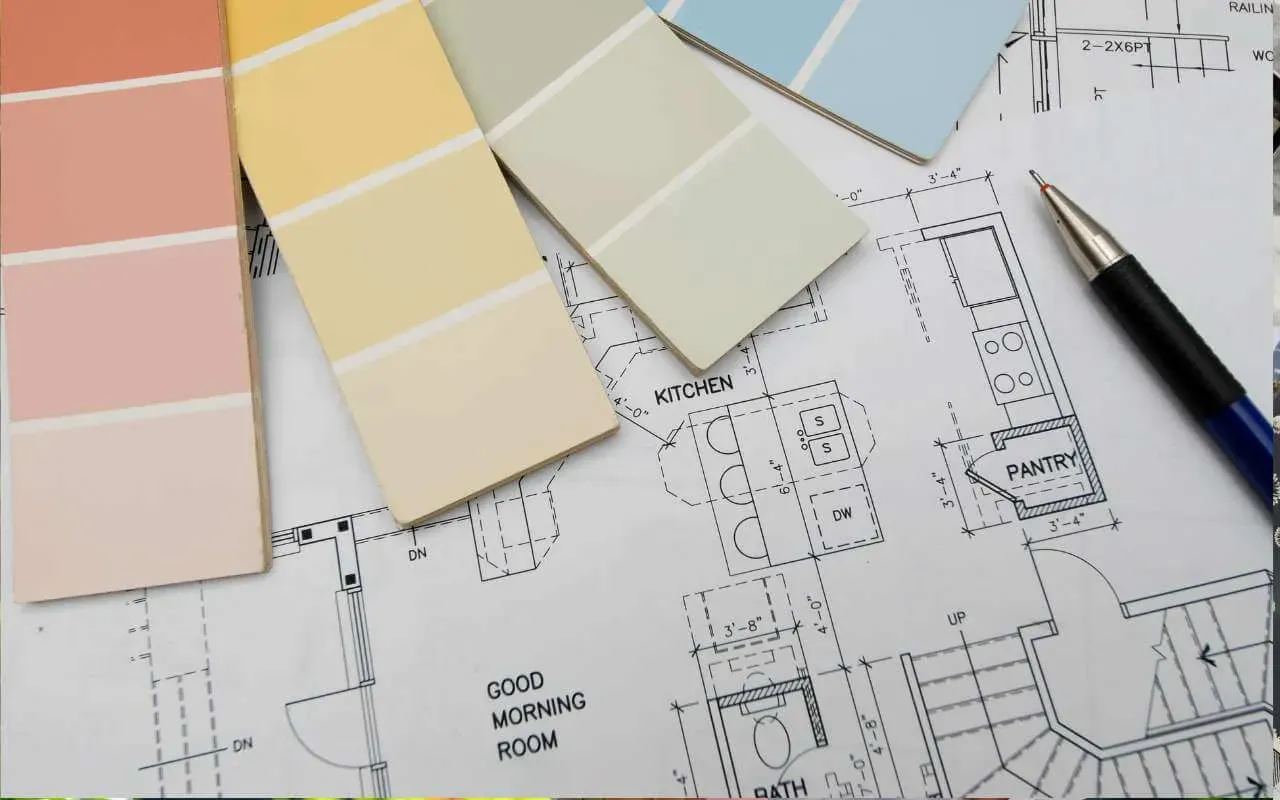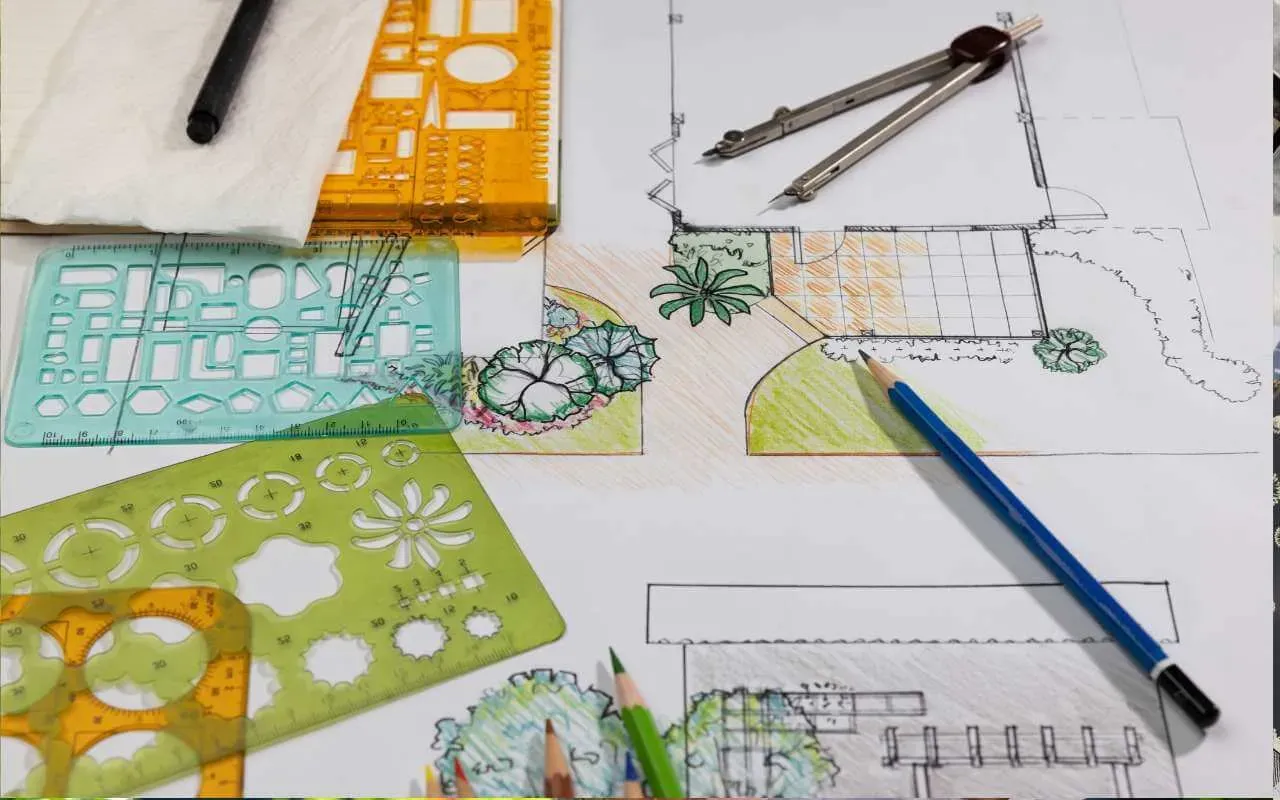Best Interior Design Schools

Excited to dive into interior design? With countless options available, choosing the right interior design school can feel overwhelming. Interior design schools offer a unique blend of creativity, technical skills, and practical experience, preparing students to excel in a dynamic field.
These institutions provide comprehensive curriculums that cover everything from foundational design principles to advanced techniques in spatial planning, color theory, and sustainable design. Many schools boast state-of-the-art facilities, including design studios, computer labs equipped with the latest software, and extensive libraries of design resources.
In this blog, I will gather some of the best interior design schools, application tips, and financing strategies to help you make an informed decision on an interior design school.
Unlock a scholarship for aspiring interior designers and kickstart your career!

Interior Design Schools in The U.S
We’ve curated a list of top interior design schools based on key factors such as curriculum, faculty, resources, and student success. Please remember that while these interior design colleges are highly regarded, the best fit for your interior design career varies depending on your personal preferences and career goals.
New York School of Interior Design
- Key Highlights: NYSID is acclaimed as a top interior design school for its focus on both theory and practical instruction. Its BFA, MA, and MFA programs are CIDA accredited.
- Program Details: At NYSID, you can choose from a variety of programs, including BFA, MA, and MFA degrees. The curriculum emphasizes design theory, real-life experience, professional development, sustainability, and well-being.
- Notable Alumni: Notable alumni include Ellie Cullman and Mariette Himes Gomez, among others.
Parsons the New School of Design
- Key Highlights: Parsons, renamed as Parsons the New School of Design, is a top interior design school with a strong fine arts curriculum and access to innovative resources. It has high job placements for graduates.
- Program Details: Different degree programs and undergraduate and graduate environmental and interior design programs are available at Parsons. The school encourages future design professionals to study abroad and do internships for a well-rounded education.
- Notable Alumni: Prominent alumni include Mark Hampton and Victoria Hagan.

Pratt Institute
- Key Highlights: Pratt provides comprehensive interior design degree programs with an emphasis on collaborative work and sustainable design practices.
- Program Details: Pratt’s interior design programs are industry-focused, with an emphasis on sustainable practices. Interior design students gain real-life experience through internships.
- Notable Alumni: Some famous names from Pratt include Karim Rashid and Robert Kaner.
Rhode Island School of Design
- Key Highlights: RISD has an interior design qualification known for its rigorous approach to interior studies and architecture.
- Program Details: RISD offers a master’s degree and a bachelor’s degree in interior architecture, emphasizing critical thinking, research, and design.
- Notable Alumni: Notable alumni include Christina Kim and Mary Ping.
Savannah College of Art and Design (SCAD)
- Key Highlights: SCAD has a diverse curriculum that prepares students for the dynamic interior design field.
- Program Details: SCAD offers a range of interior design programs, including BFA, MA, and MFA degrees. It also provides online learning options.
- Notable Alumni: Successful SCAD alumni include Claire Keane and Derrick Adams.
Get Matched to Thousands of Scholarships
Create your Bold.org profile to access thousands of exclusive scholarships, available only on Bold.org.
Create Free ProfileCornell University
- Key Highlights: Cornell is highly esteemed for its research-based approach to interior design and is known as one of the best universities in New York.
- Program Details: Cornell’s interior design program emphasizes sustainability and well-being in its curriculum. Students gain practical experience through internships.
- Notable Alumni: Cornell has produced successful interior designers like Lee Mindel and Stephanie Goto.
University of Cincinnati
- Key Highlights: The University of Cincinnati blends theoretical knowledge with experiential learning in its interior design program.
- Program Details: Students at this university can pursue undergraduate and graduate programs in interior design. They gain real-world experience through internships.
- Notable Alumni: Notable alumni include Patricia Urquiola and Paul Brown.
Virginia Tech
- Key Highlights: Virginia Tech’s interior design majors program focuses on problem-solving skills, creativity, and technical competency.
- Program Details: Virginia Tech offers undergraduate Interior Design degrees, including a study abroad opportunity in Europe.
- Notable Alumni: Successful alumni from Virginia Tech include David Jameson and Lauren Rottet.

California College of the Arts
- Key Highlights: CCA emphasizes the role of design in social impact and innovation.
- Program Details: CCA’s Interior Design Program encourages students to explore creative ideas while focusing on the critical issues of our time.
- Notable Alumni: Noteworthy alumni from CCA include Jony Ive and Helen Maria Nugent.
Drexel University
- Key Highlights: Drexel emphasizes hands-on experience and offers co-op work experiences.
- Program Details: Drexel’s interior design program offers a 1-year professional degree following the completion of a Bachelor’s degree in a related field.
- Notable Alumni: Successful Drexel designers include Barbara Eberlein and Marguerite Rodgers.
Tips for Applying to Interior Design Schools
Applying to an interior design school can be a rigorous process. But fear not, and we’ve assembled several key tips that should make the task less daunting and more successful.
1. Understand the Requirements
Each school has its own set of admission requirements. It’s crucial to become familiar with these guidelines well before the application deadline. This includes understanding the prerequisites for your chosen program, submission deadlines, and any required test scores.
2. Prepare a Strong Portfolio
Your portfolio is a visual representation of your skills, creativity, and potential as an interior designer. Include a variety of work that showcases your ability to solve problems creatively, understand space and materials, and communicate visually.
3. Highlight Relevant Experience
If you have any experience in interior design, such as internships or relevant jobs, make sure to highlight this in your application. This shows schools that you have practical experience in the field.
4. Get Stellar Recommendations
Letters of recommendation can significantly boost your application. Reach out to teachers, mentors, or employers who can vouch for your skills, work ethic, and passion for interior design.
5. Write a Compelling Personal Statement
Your personal statement is an opportunity to share your passion for interior design and explain why you want to pursue this career path. Be authentic and write from the heart about what draws you to this field.
These tips should provide a solid foundation as you begin the application process. Remember, every journey starts with a single step — take yours today by applying these strategies to gain admission into one of the top interior design schools.

What Are the Demands of Interior Design Programs?
Interior design programs offered by top schools focus on fostering creative and technical skills. Each program has its unique approach, but core subjects are commonly featured in all of them.
Design Theory
At the heart of every reputable interior design program lies a comprehensive exploration of design theory. This foundational element immerses students in the principles of color theory, furniture styles, lighting concepts, and spatial planning techniques.
Through theoretical frameworks and practical applications, students develop a nuanced understanding of how to harmonize aesthetics with functionality, striving to create interior spaces that not only captivate the senses but also cater to the needs and lifestyles of their occupants. By delving into the intricacies of design theory, students cultivate the ability to conceptualize, analyze, and execute interior design solutions that are both visually compelling and spatially efficient.
Technical Skills
Equipping aspiring interior designers with the requisite technical skills is paramount to their success in the field. Within this domain, students are introduced to a diverse array of software applications, including industry-standard tools such as AutoCAD, SketchUp, and Adobe Illustrator.
Through hands-on training and immersive learning experiences, students gain proficiency in architectural drafting, 3D modeling, and digital rendering techniques. Moreover, they acquire expertise in traditional practices such as manual drafting and model making, honing their ability to communicate design concepts effectively to clients and construction professionals. By mastering these technical skills, students emerge as adept problem solvers and confident communicators, ready to navigate the complexities of real-world design challenges with precision and finesse.
Sustainability
In response to the increasing demand for environmentally conscious design solutions, sustainability has emerged as a pivotal focus area within interior design education. Through dedicated coursework and experiential learning opportunities, students explore the principles and practices of sustainable design, with an emphasis on minimizing the environmental impact of their projects.
From the selection of eco-friendly materials to the integration of energy-efficient technologies, students are equipped with the knowledge and tools needed to promote environmental stewardship and create healthier, more sustainable interior environments. By embracing sustainability as a core tenet of their education, students emerge as agents of positive change, poised to shape a more resilient and environmentally responsible future for the design industry and beyond.
Professional Development
Real-world experience is crucial for budding interior designers. Many programs offer internships at renowned design firms. These opportunities allow you to apply classroom learning in real-world scenarios and build a robust portfolio.
Well-being
The role of an interior designer extends beyond aesthetics. Schools emphasize the importance of creating spaces that promote well-being. This involves understanding ergonomics, acoustics, and even psychology.
Each program is designed to equip you with a holistic understanding of interior design. The choice of a program should align with your career goals and personal interests in the vast field of interior design.

What to Know Before Applying to Best Interior Design Schools
Before you start your journey toward getting a formal education in interior design, it’s important to know what you need to do and what the requirements are for applying. You should be ready for the hard work and dedication that comes with studying interior design.
Academic Preparation
Before diving into the application process for interior design schools, it’s essential to recognize the significance of academic preparation. Many institutions require applicants to possess a foundational understanding of art or related disciplines.
Building a solid knowledge base in areas such as art history, drawing techniques, color theory, and 3D design can greatly enhance your candidacy. By honing these skills, you not only demonstrate your commitment to the field but also position yourself as a well-rounded and capable candidate. Embracing academic preparation not only strengthens your application but also equips you with the tools necessary to thrive in the dynamic world of interior design.
Portfolio Requirement
One of the critical components of applying to top interior design schools is the submission of a portfolio showcasing your artistic prowess and design capabilities. Your portfolio serves as a visual narrative of your creative journey, allowing you to highlight your best work and showcase your unique style and innovative thinking.
Through carefully curated examples, you can demonstrate your proficiency in various design techniques, problem-solving abilities, and capacity for conceptualization. Crafting a compelling portfolio not only underscores your technical skills but also provides admissions committees with insight into your creative process and potential as a future interior designer.
3. Letters of Recommendation
In addition to presenting a stellar portfolio, securing strong letters of recommendation can significantly bolster your application. These letters offer insights into your character, work ethic, and potential for success in the field of interior design. Recommendations from mentors or professionals who have witnessed your growth and dedication firsthand can provide valuable endorsements of your abilities and suitability for the program.
Ideally, these references should be able to speak to your passion for design, your capacity for collaboration, and your readiness to excel in an academic environment. By soliciting thoughtful and insightful recommendations, you not only validate your candidacy but also demonstrate your commitment to pursuing excellence in interior design.
Interview Process
Some schools might also want to interview you as part of their selection process. They want to see how passionate you are about design, how well you understand the latest trends in the industry, and how committed you are to learning. Be prepared to explain why you have chosen interior design as your career path.
Financial Considerations
Getting an education costs money. Before deciding on a school, make sure you carefully look at the finances involved. Consider things like tuition fees, living expenses, available scholarships, and so on. Different schools have different options for financial aid - so make sure you explore all of them.
It’s crucial to keep in mind that every interior design school has its unique set of requirements and expectations for applicants. From portfolio submissions to academic prerequisites, each institution may have distinct criteria that prospective students need to fulfill. Therefore, starting the application process early and adopting a systematic approach is paramount.
By giving yourself ample time to research, gather necessary materials, and thoroughly understand each school’s requirements, you can ensure that you present yourself in the best possible light to admissions committees.
Breaking down the application process into manageable steps and setting deadlines for each task can help you stay organized and focused, ultimately increasing your chances of success. So, while the process may seem overwhelming at first, approaching it methodically and proactively will empower you to navigate the intricacies of applying to interior design schools with confidence and ease.

Frequently Asked Questions: Best Interior Design Schools
What are the key factors to consider when choosing an interior design school?
When selecting an interior design school, it’s essential to consider factors such as best colleges, job opportunities, program locations (e.g., Metropolitan Areas), degree options, special focus, and opportunities for practical experience. Additionally, evaluating the school’s alumni success and well-developed networks within the school can provide valuable insights into the institution’s reputation and industry connections.
What components should a strong interior design portfolio include?
A robust interior design portfolio should showcase a diverse range of work that demonstrates your creativity, problem-solving abilities, design research, and technical skills. Include projects that highlight your understanding of design principles, spatial planning, material selection, and visual communication. Additionally, incorporating any relevant experience, such as internships or freelance work, can further strengthen your portfolio.
What steps can I take to prepare for the application process at top interior design schools?
It’s important to ensure you meet the academic prerequisites by acquiring a solid foundation in art-related subjects to prepare for the application process at top interior design schools. Develop a compelling portfolio that showcases your creativity and technical skills.
Secure strong letters of recommendation from mentors or professionals familiar with your work. Familiarize yourself with each school’s specific requirements and deadlines. Consider financial considerations, such as tuition fees and available scholarships, to plan accordingly for the cost of education.
Discover a scholarship for budding interior designers and launch your career!